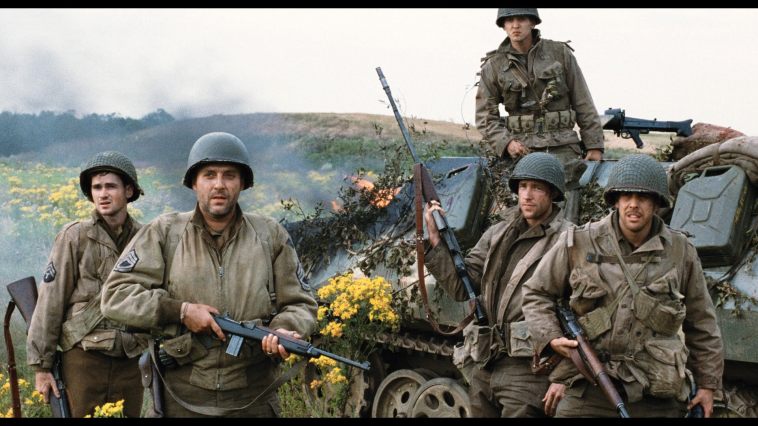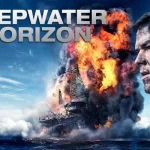🎬𝐒𝐀𝐕𝐈𝐍𝐆 𝐏𝐑𝐈𝐕𝐀𝐓𝐄 𝐑𝐘𝐀𝐍 𝟏𝟗𝟗𝟖

“Saving Private Ryan” (1998), directed by Steven Spielberg, is celebrated as one of the most realistic and powerful depictions of World War II ever brought to screen. The film opens with the intense and visceral depiction of the D-Day invasion of Normandy on June 6, 1944, as American troops storm Omaha Beach under devastating enemy fire. Following this harrowing sequence, the story shifts to Captain John H. Miller (Tom Hanks) and his squad’s mission to find and bring home Private James Francis Ryan (Matt Damon), whose three brothers have all been killed in action. As Miller and his men traverse war-torn France, they confront the moral complexities of duty, sacrifice, and the human cost of war.
“Saving Private Ryan” is acclaimed for its groundbreaking cinematography, which captures the chaos and brutality of combat with unprecedented realism. Spielberg’s direction immerses viewers in the visceral horrors of war while also exploring the bonds of brotherhood forged in battle. The film’s portrayal of the soldiers’ camaraderie and the personal toll of their mission resonates deeply, showcasing the emotional and psychological scars left by war. Tom Hanks delivers a poignant performance as Captain Miller, embodying the film’s central themes of leadership, honor, and the sacrifices made by ordinary men in extraordinary circumstances.
Beyond its technical achievements, “Saving Private Ryan” is praised for its historical accuracy and respectful portrayal of veterans’ experiences. It received critical acclaim and multiple awards, including five Oscars, and continues to be regarded as a masterpiece of war cinema. The film’s impact extends beyond its gripping narrative, serving as a tribute to the bravery and resilience of those who fought in World War II and a powerful meditation on the human spirit in the face of unimaginable adversity.











